A Tricolored Heron grumbled noisily when I interrupted its fishing:
Butterflies were out this morning, including this Zebra Longwing, official State Butterfly of Florida: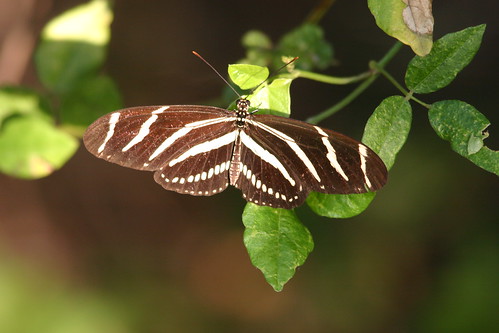
A female Rose-breasted Grosbeak surprised me: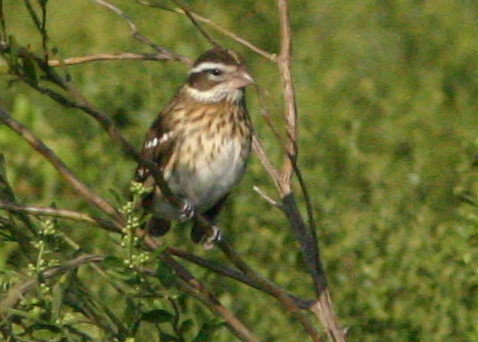
As a child in New Jersey, I tried some bird photograpy, using a Kodak Brownie box camera. My black and white images of House Sparrows, pigeons and starlings were nearly always out of focus, as I tried to get closer than permitted by the tiny fixed lens. Once, in a low shrub in the Passaic River bottomlands near my home, I found a nest and greenish eggs of a Yellow-billed Cuckoo. After taking several photos, I returned the next day to find the flimsy nest empty and obviously disturbed by a predator. When the film was developed, the eggs looked like fuzzy blobs.
The next time I tried to photograph birds was after retiring to New Mexico. There, I purchased a small digital point-and-shoot Canon A40 and rigged up a digiscope with my Kowa spotting scope. To steady the camera, I made an adapter from a plastic Durkee’s spice container. My rig is shown here
Only this spring did I purchase a long lens, an image-stabilized 300mm with 1.2x extender, coupled with an older Canon Rebel body. As I work through the learning curve, results are a little better, if the birds cooperate. If I anticipate photographing birds in flight, I pre-set to the landscape mode, to provide greater depth of field. Otherwise, I use a custom setting with a single central sensor. The trouble is, I seem never to have the camera properly set when there is a photo opportunity. This results in a lot of fumbling and delay. I also find myself reaching for the camera before using binoculars to identify a fleeting bird, hoping that my image will serve to pin it down.
This morning I birded our Florida “patch,” which is only a short walk from our home. It was a beautiful, cool and clear morning. Hoping for some flight shots, I pre-set to landscape mode.
A Great Egret flew over, but before I got it into the small field of view, it had moved away, fast:
Then I saw a small bird moving in the brush. It was an American Redstart. I forgot to change the autofocus setting, so only the leaves in the foreground were in focus.
By the time I adjusted the setting the redstart was also on its way: 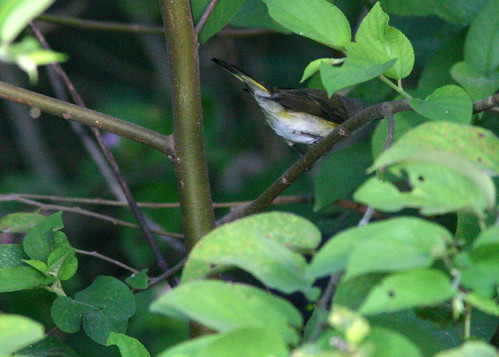
Next, the shadow of a large bird passed right over my head. It was a Cooper’s Hawk. As it wheeled around, I tried hard to get it in the viewfinder, then had to change the settings back to landscape on the fly, resulting in another “parting shot.” By the way, I believe it was no accident that the hawk put the sun behind him as he checked me out. I have seen the same with Steller’s Jays in the New Mexico forest. They often cast their shadows on mine as they peered furtively from their treetop perches.
No time for binocs! Was this the Cooper’s Hawk that buzzed me, or possibly a Red-shouldered fly-by? [Yup, the latter– see Janine’s comments below. Ken]
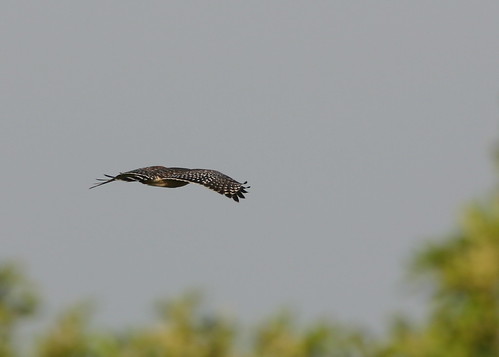
I never got the binoculars on a (presumptive) House Wren that showed me its backside as I struggled to focus on it:
Quickly, back to the landscape pre-set as a flock of white herons, which I believe were Cattle Egrets, almost got away:
A nice buck walked out into the open and just stared at me. Yup, I was back in landscape mode and autofocused on the foreground.
By the time I switched setting, the deer was well on its way into the Everglades: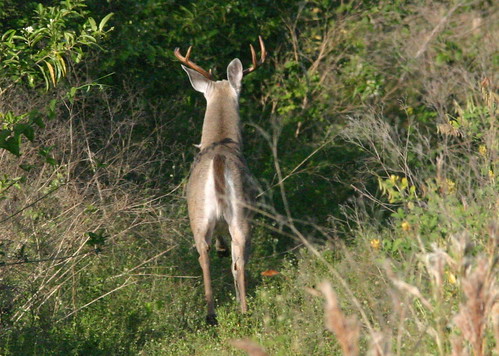
A Great Egret was cooperative and gave me plenty of time to set up:
I did get nicely backlighted views of a flock of a dozen juvenile White Ibises settling down at the edge of a canal:













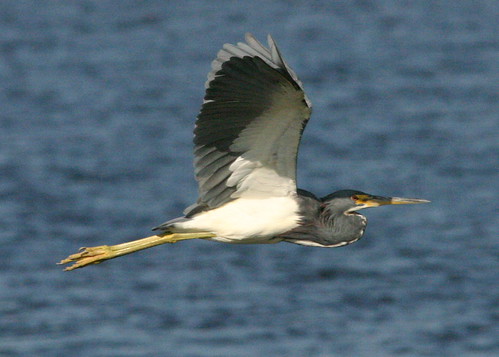
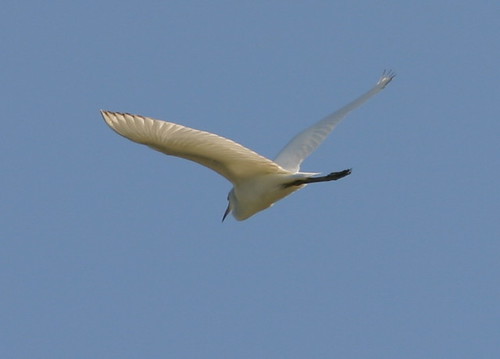

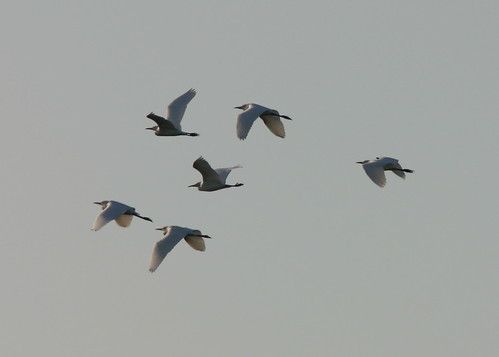
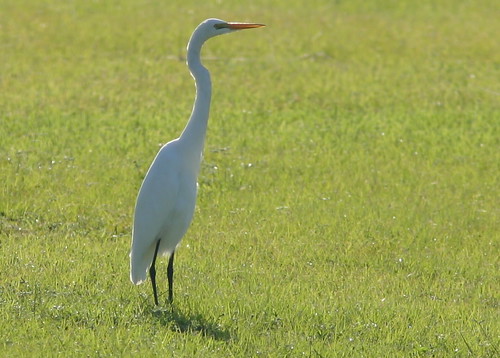
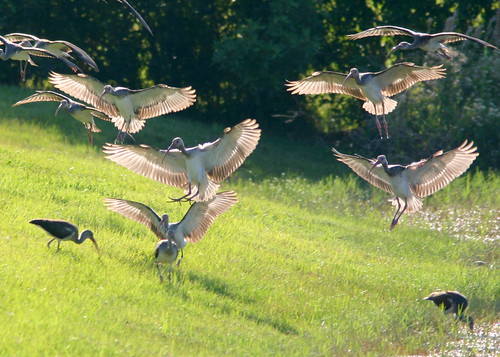
October 20th, 2008 at 7:27 pm Love the Ibis shot Ken. Your flyby hawk looks like a red shouldered hawk.
October 22nd, 2008 at 3:08 pm Yes Janine, you are right– that was sloppy of me.
A “real” Cooper’s made a pass over the small woods and disappeared to the west. This bird flew up from the south and I should have suspected it might be a different one. When I looked at it, the mottled upperwings and the tail bands did not look right, nor did the way the bird held its wings, but I was tired and inattentive– just put in a question mark about a Red-shouldered.
No excuse!! Thanks for your comment.
Ken